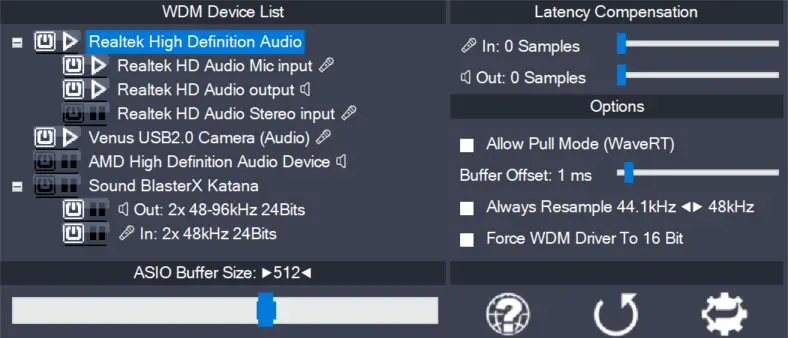Changes since version 2.7 beta 4:
- Add some sort of localization. Whether this effort is continued or not largely depends on the willingness of individuals to spend a day or two translating stuff into their native tongue – solely for being given credit. If the localization effort turns out less than useful (i.e. I receive a lot of support inquiries in Suaheli), it will not be continued. The Chinese translation is not even very good, but – the next time you consult the manual of your DVD player – this may give you the peace of mind knowing someone, at last, is handing them back a portion of their own medication. Babelfish rules!
- Undid change regarding SBPCI 128, reverting back to stereo only, but at least it works.
- A new workaround for Aureal Vortex 1, 2 and 3, so these things should work now, FWIW.
- Will not even temporarily attempt to open a device at 44.1kHz whenever its 48kHz resampling option is checked. This is supposed to fix some more “Beyond Logic” errors, especially when these were seen only sporadically.





Leave a Reply